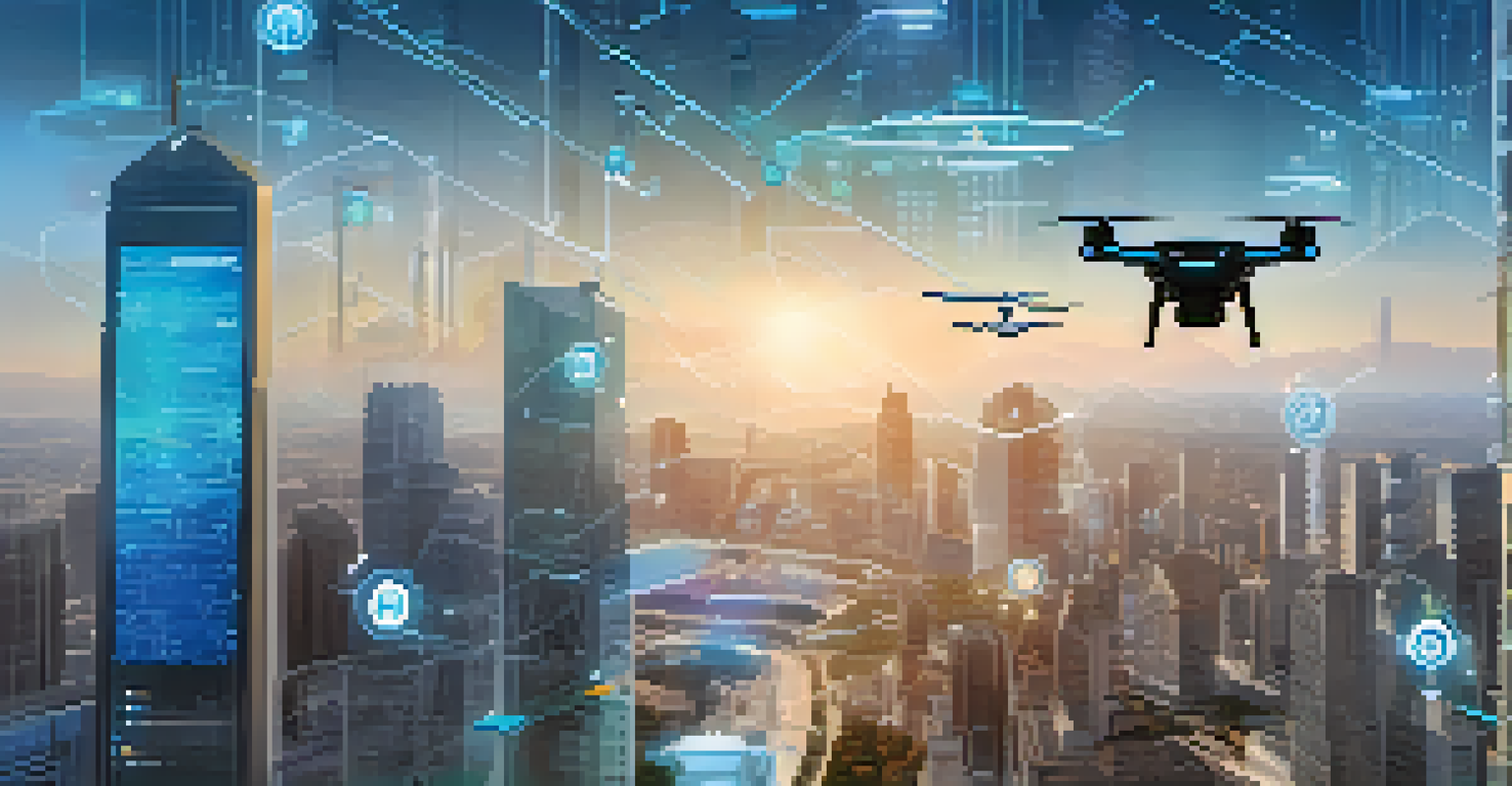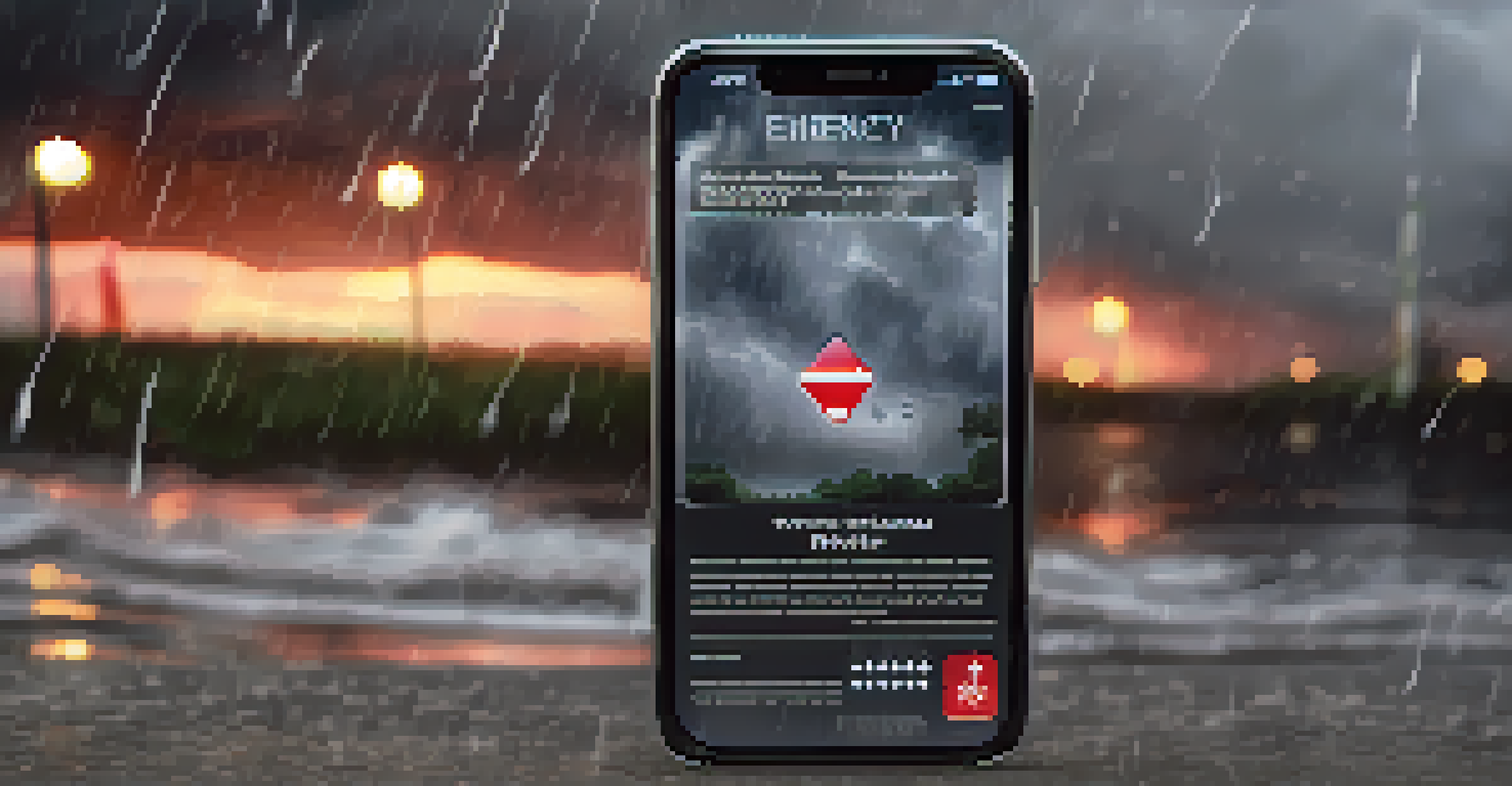Utilizing Technology for Disaster Preparedness Strategies

The Importance of Disaster Preparedness in Modern Society
Disaster preparedness is crucial for minimizing the impact of emergencies. With natural disasters becoming more frequent due to climate change, communities must adopt proactive strategies. Being prepared not only saves lives but also helps in swift recovery, reducing economic losses.
By failing to prepare, you are preparing to fail.
Modern society faces a myriad of risks, from hurricanes to wildfires and pandemics. Each of these events can disrupt lives and infrastructure, making it essential for individuals and organizations to have plans in place. Effective preparedness ensures that we are not caught off guard when disaster strikes.
Moreover, a well-prepared community can respond more efficiently, aiding in quicker recovery. Technology plays a pivotal role in enhancing these preparedness efforts, allowing for better communication, resource management, and coordination among emergency services.
How Technology Transforms Communication During Disasters
In times of disaster, clear communication can be the difference between chaos and order. Technologies such as mobile apps, social media, and emergency alert systems ensure timely updates and information dissemination. These tools allow authorities to reach a wide audience quickly, keeping everyone informed about safety measures.

For instance, during hurricanes, weather apps provide real-time updates and alerts, helping residents to evacuate or take necessary precautions. Social media platforms also serve as vital channels for sharing information and resources, fostering community support during crises.
Preparedness Minimizes Disaster Impact
Being proactive in disaster preparedness can significantly reduce loss of life and economic damage during emergencies.
Furthermore, technology enables feedback loops where citizens can report emergencies or seek help. This interactive communication not only empowers individuals but also enhances the overall response efforts by authorities and organizations.
Leveraging Data Analytics for Informed Decision-Making
Data analytics plays a significant role in disaster preparedness by enabling informed decision-making. By analyzing historical data on past disasters, authorities can identify patterns and areas at risk. This information helps in creating targeted preparedness plans tailored to specific community needs.
The best way to predict the future is to create it.
For example, predictive analytics can forecast the likelihood of flooding in certain areas based on rainfall patterns and soil saturation levels. This foresight allows for timely interventions, such as reinforcing infrastructure or issuing evacuation orders in advance.
Additionally, data-driven strategies can optimize resource allocation during emergencies. By understanding where resources are most needed, responders can prioritize their efforts and ensure that assistance reaches those who require it most.
Innovative Technologies Enhancing Emergency Response Efforts
The integration of innovative technologies is revolutionizing emergency response efforts. Drones, for instance, are being used for aerial surveillance to assess damage and locate stranded individuals. This technology not only speeds up response times but also provides critical information that may not be accessible from the ground.
Moreover, mobile technology allows first responders to access vital information in real-time, improving their effectiveness. Apps can provide maps, resource locations, and communication tools to ensure that teams are well-coordinated during emergencies.
Technology Enhances Emergency Response
Innovative technologies like drones and mobile apps improve communication and coordination in emergency situations.
Robotics and artificial intelligence are also making their mark, with robots assisting in search and rescue missions. Such advancements not only enhance safety for human responders but also improve the chances of locating survivors in challenging environments.
Community Engagement Through Technology for Preparedness
Engaging the community in disaster preparedness is essential for building resilience. Technology provides various platforms for education and training, making it easier for people to learn about potential risks. Online courses and webinars can equip individuals with the knowledge needed to respond effectively during emergencies.
Social media campaigns can also raise awareness about preparedness measures, encouraging communities to create emergency kits and plans. By fostering a culture of preparedness, individuals feel more empowered and capable of handling crises.
Additionally, community-driven apps can facilitate collaboration, allowing residents to share resources and support each other. This sense of camaraderie not only strengthens community ties but also enhances overall preparedness and response efforts.
The Role of IoT in Real-Time Monitoring and Alerts
The Internet of Things (IoT) has emerged as a powerful tool in disaster preparedness strategies. IoT devices can continuously monitor environmental conditions, such as temperature, humidity, and water levels, providing real-time data to authorities. This information is vital for early warning systems that can alert communities about impending disasters.
For example, sensors placed in flood-prone areas can detect rising water levels and automatically send alerts to residents. This proactive approach not only aids in timely evacuations but also mitigates the impact of disasters on communities.
Community Engagement Builds Resilience
Involving communities in preparedness efforts fosters a culture of readiness and strengthens support networks during crises.
Moreover, IoT can enhance infrastructure resilience by monitoring the health of buildings and bridges. By identifying potential weaknesses before they become critical, authorities can take preventive measures to ensure safety during disasters.
Challenges and Considerations in Adopting Technology
While technology offers numerous advantages for disaster preparedness, it's essential to recognize the challenges associated with its adoption. One major concern is the digital divide, where not all individuals have equal access to technology. This disparity can lead to gaps in information dissemination, leaving vulnerable populations without critical updates.
Additionally, reliance on technology raises questions about cybersecurity. During disasters, systems can be susceptible to attacks, which may hinder response efforts. Therefore, it is crucial to implement robust security measures to protect data and communication channels.

Furthermore, training and education around these technologies are vital. Without proper understanding and usage, even the best tools may not yield the desired outcomes. Continual training and resources need to be provided to ensure that communities can effectively leverage technology during emergencies.